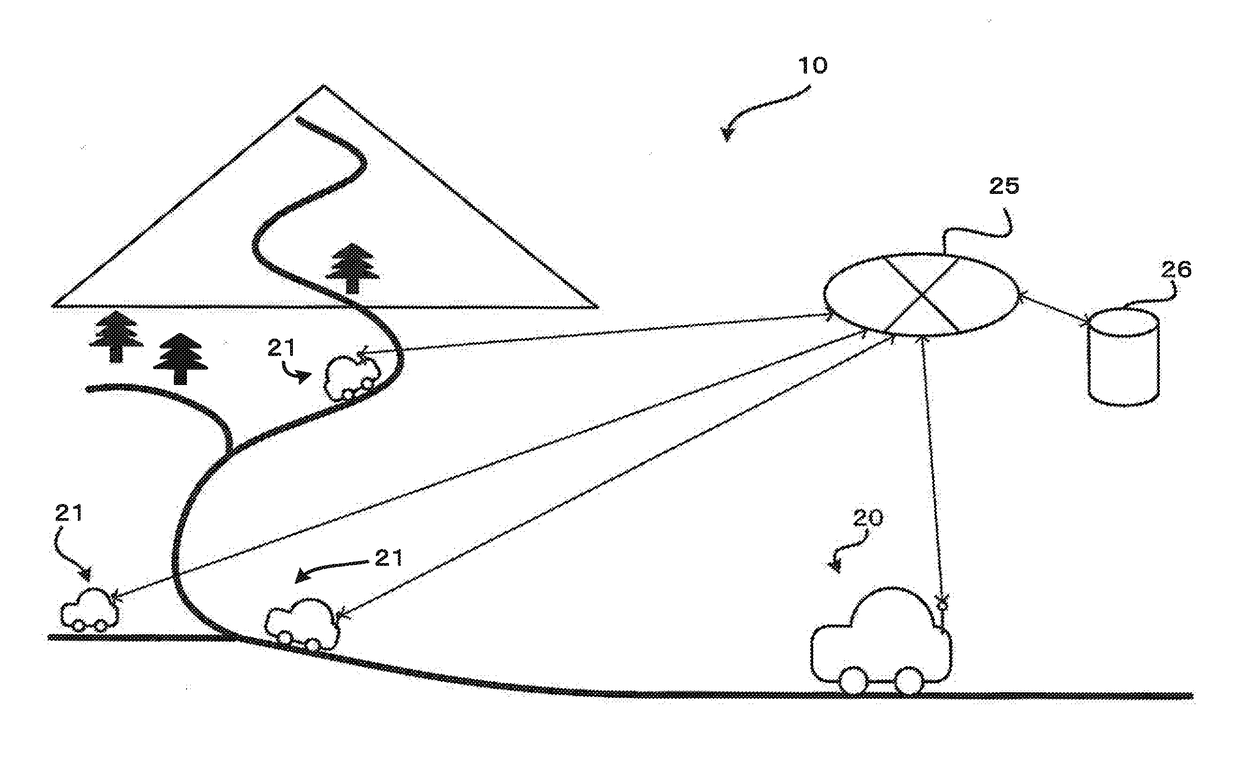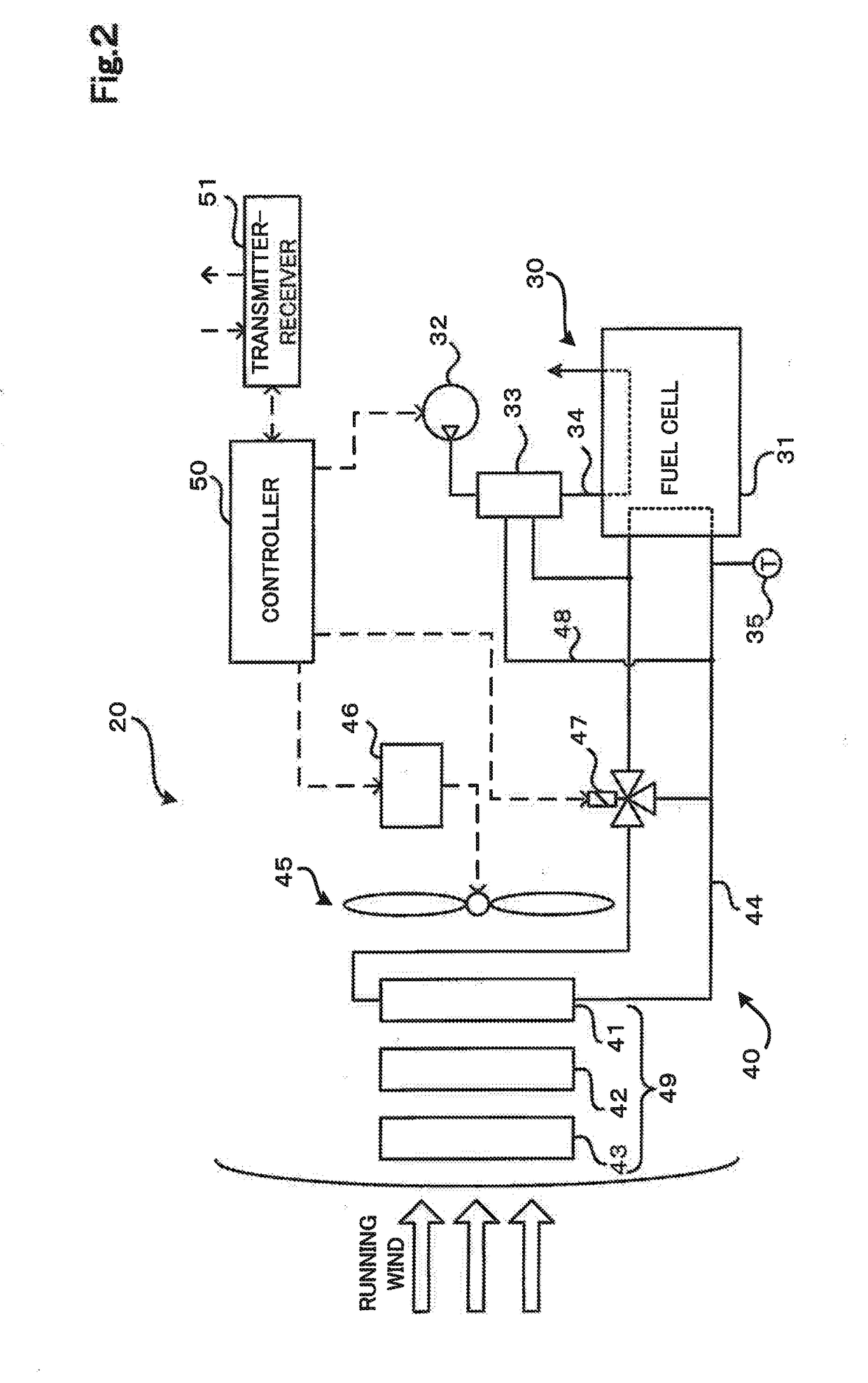Fuel cell vehicle and control method thereof
a fuel cell and vehicle technology, applied in battery/fuel cell control arrangement, electrochemical generators, transportation and packaging, etc., can solve the problems of excessive fuel cell temperature rise, limited performance of cooling devices mounted on vehicles,
- Summary
- Abstract
- Description
- Claims
- Application Information
AI Technical Summary
Benefits of technology
Problems solved by technology
Method used
Image
Examples
first embodiment
A. First Embodiment
[0020](A-1) General Configuration of Control System
[0021]FIG. 1 is a diagram illustrating the schematic configuration of a control system 10 according to a first embodiment of the present disclosure. The control system 10 of this embodiment is provided as a control system involved in a cooling system of a fuel cell in a vehicle equipped with the fuel cell as one driving energy source. The control system 10 of the embodiment is provided as a system configured to automatically make communication with individual vehicles so as to collect information regarding the driving conditions (for example, information including positions, vehicle speeds and accelerations of the individual vehicles and navigation information) of the individual vehicles, to derive a load applied to a specific vehicle that travels on an estimated route using the collected information, and to change control of the cooling system of the fuel cell in the specific vehicle. The control system 10 automa...
second embodiment
B. Second Embodiment
[0123]The configuration of the first embodiment uses the current traffic flow information on the estimated route, in addition to the estimated route, to estimate the load applied to the own vehicle 20 during running of the own vehicle 20 on the estimated route at step S110 of FIG. 3. A different configuration may, however, be employed. A configuration that uses the past traffic flow information in place of the current traffic flow information used in the first embodiment is described below as a second embodiment. The configuration of the second embodiment is similar to the configuration of the first embodiment except a process of estimating the load applied to the own vehicle 20 during running of the own vehicle 20 on the estimated route (step S110). The description of the configuration common with the first embodiment is omitted.
[0124]According to the second embodiment, at step S430 in the overload running determination process of FIG. 7, the past average vehicl...
third embodiment
C. Third Embodiment
[0125]A configuration that uses the driving history of the own vehicle in place of the current traffic flow information used in the first embodiment at step S110 of FIG. 3 is described below as a third embodiment. The configuration of the third embodiment is similar to the configuration of the first embodiment except a process of estimating the load applied to the own vehicle 20 during running of the own vehicle 20 on the estimated route (step S110). The description of the configuration common with the first embodiment is omitted.
[0126]According to the third embodiment, at step S430 in the overload running determination process of FIG. 7, a change in average vehicle speed during past running of the own vehicle 20 on the estimated route is extracted from the driving history of the own vehicle 20, in place of estimation of the vehicle speed of the own vehicle 20 using the current traffic flow information. At step S450, a load applied to the own vehicle 20 that runs ...
PUM
| Property | Measurement | Unit |
|---|---|---|
| cooling power | aaaaa | aaaaa |
| temperature | aaaaa | aaaaa |
| heat release capacity | aaaaa | aaaaa |
Abstract
Description
Claims
Application Information
 Login to View More
Login to View More - R&D
- Intellectual Property
- Life Sciences
- Materials
- Tech Scout
- Unparalleled Data Quality
- Higher Quality Content
- 60% Fewer Hallucinations
Browse by: Latest US Patents, China's latest patents, Technical Efficacy Thesaurus, Application Domain, Technology Topic, Popular Technical Reports.
© 2025 PatSnap. All rights reserved.Legal|Privacy policy|Modern Slavery Act Transparency Statement|Sitemap|About US| Contact US: help@patsnap.com



